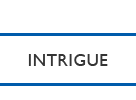It’s 11 o'clock on a Tuesday morning. Usually at this hour, I’d be stepping out of my office for an absurdly early lunch, but not today. Today, I find myself leaning into my computer screen in the most isolated corner of The Atlantic's kitchen, hoping that no one stumbles in as I try to watch a stranger’s funeral over the Internet.
When Walker Posey invited me to view the funeral of his grandmother, Alta Marie, via webcast, I was stunned. I had already interviewed Posey, a fourth-generation funeral director, for this article. He shared his experiences and opinions about funeral webcasting with me, but I didn’t expect him to let me watch a funeral, let alone the funeral of one of his family members. I knew I had to say yes to his offer, but I wanted to say no. I felt anxious about being a voyeur, a foreign digital presence in an otherwise private family moment.
I was not alone in my discomfort. When I asked my coworkers if they had ever watched a private funeral service online, the answer was a universal no. That no also came with a lot of weird looks. Most people don’t like to talk about death at all, but the added component of online viewing seems to push this topic firmly into the taboo. And yet, Posey estimates that around a quarter of his customers decide to use webcasting when preparing a funeral service.
Webcasting has been around since the mid-1990s, but the service didn’t infiltrate the funeral industry until the early 2000s. Even then, it was a sluggish incursion, one that only gained momentum in the last six or seven years. “The funeral profession’s like a cruise ship,” said Joe Joachim, CEO of funeralOne, a Detroit-based company that began offering funeral webcasting around 2002. “It takes a while to turn, but it can turn.”
The service’s growing appeal is, by all accounts, a result of the increasing mobility of modern society. Remote participation is often the only option for those who live far away or have other barriers—financial, temporal, health-related—barring them from attending a funeral. Within the industry, it’s seen as a compromise, an additive component that expands the accessibility of a service. “It’s not designed to replace folks attending funerals,” said Posey. “A lot of folks just don’t live where their family grew up and it’s difficult to get back and forth.”
Secularization may also play a part in its growing acceptance, as what qualifies as an acceptable funeral becomes more flexible. “The rules are starting to become more plastic,” said Dr. Wendy Moncur, a researcher in socio-digital interaction at the University of Dundee. “There's more of a personal approach to funerals, rather than a formulaic approach of what was always done in a church.” In other words, as we release ourselves from the constraints of tradition, we find more space not only to better reflect the decedent’s personality, but also for modern tools.
It helps, of course, that webcasting has gotten better and cheaper over the years. The funeral industry is indeed an industry, and as the service became easier-to-use and more affordable over the past decade, it also became more common to see it as an offering in funeral homes. According to The New York Times, some establishments offer the option for free while others charge between $100 and $300. Compared to the other possible costs associated with a funeral (in 2012, the median cost of embalming was $695 and a metal casket was $2,395), webcasting is a bargain.
While the utility of funeral webcasting is clear, what is less apparent is the technology’s impact on the Westerns world’s relationship with death. For individual mourners, is it helpful or harmful to the grieving process? What happens if there’s a technical problem with the webcast—will we grieve even more knowing we missed the service in person and online? Does webcasting bode well for the future of death acceptance? Or does it only promote of our further alienation from that inevitable moment?
According to Carla Sofka, it’s still too early to tell. A professor of social work at Siena College, Sofka has been studying the interface of technology and grief since the mid-1990s. She thinks we simply don’t know enough yet about the possible psychological consequences of funeral webcasting to make those calls. “I think it’s important for people who have experience with [webcasts] to share their stories and to reach out to people like myself, so that we can continue to learn. Are they positive? Are they negative? Are they a mixed bag? Because I think the potential for all of those things to be true is there.”
Caitlin Doughty, a death theorist and mortician, argues that while it’s no surprise that the death industry has an online dimension, we should not indiscriminately accept webcasting as part of the funeral process. “The physical dead body is proof of death, tangible evidence that the person we love is gone, and that we will someday be gone as well,” said Doughty. “To have death and mourning transferred online takes away that tangible proof. What is there to show us that death is real?”
Moncur has a more positive take. She argues that rather than allowing death and its attendant rituals to lie on the periphery of our existences, webcasting and other technologies make death more visible by bringing it quite literally into our homes through our computer screens and mobile devices. “The availability of webcasts for funerals play a part in the ‘de-sequestration’ of death and bereavement,” Moncur told me. “Death is becoming less hidden, more public, in our society because of the Internet and contemporary online responses to grief and loss.”

All of these ideas are running through my head as I’m getting ready to watch Alta Marie Posey’s funeral. When the webcast starts, the audio and video are out of sync, but catch up to each other about nine minutes in. I see Alta Marie’s casket in the center of the frame, piled high with flowers. I hear the sounds of a mournful organ. A silver-haired man steps up the podium and eulogizes Alta Marie, explaining how he came to know her through the church and through his mother.
It’s certainly not the same as being at an actual funeral. For mourners watching from a screen, there are no enveloping hugs, no potent shoulder squeezes. Webcasts simply don’t have the same rawness and catharsis of in-person attendance—just as watching the World Series in your living room couldn’t possibly compare to the roaring excitement of being in the stadium.
Posey gets up to speak. He talks about how his grandmother was a great host and how she loved boating, but his speech is interrupted as the webcast abruptly cuts to black after minutes. I tried to reload my browser several times in hopes the video would play again, but to no avail. (Walker later told me it was because he was using a new computer for the webcast and it went to sleep during the service.)
After the camera stopped rolling (or rather, streaming) I sat for a moment. I realized that I felt fine—certainly not about Alta Marie’s death, but about the webcasting. The technology can be finicky and, given the delicate situation, any glitches could be emotionally trying. But it would be hasty to write webcasting off based on one experience that went awry. If imagined merely as a concession, funeral webcasting still feels like a respectful alternative to attending in-person, a way to say goodbye from afar when distance, health, or whatever else conspires to keep you in place. The truth is, everyone grieves in different ways. And funeral webcasting offers one more opportunity for people to process a loss and remember those who have died.
Article originally posted HERE.






